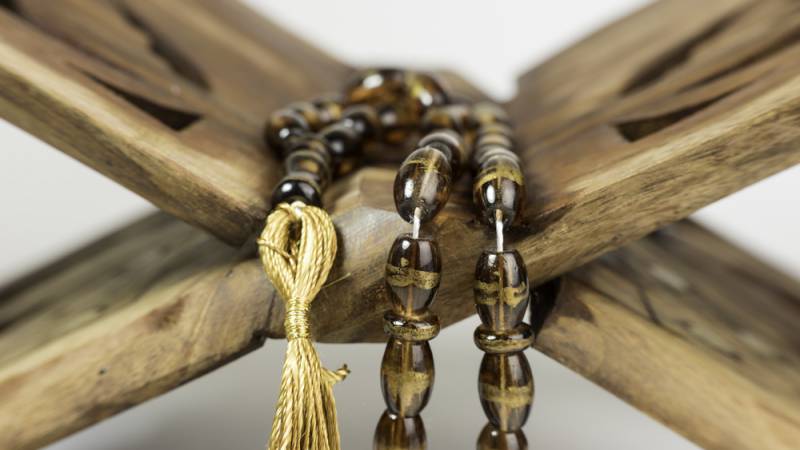Legends based on polemic and fantasy distorted the image of medieval Nizari Ismaili Muslims, turning them into drug-crazed “assassins.”
Legends of the Assassins first appeared in medieval times and circulated widely in both the Middle East and Europe. Arising from the mysterious practices of the Nizari Ismailis and their unwavering devotion to their chief—the so-called Old Man of the Mountain—these myths depicted the group as a band of drugged murderers bent on senseless mayhem.
The prominence of these stories shows how readily fictions, if repeated long enough, may be confused with facts. These fanciful tales eventually became ingrained as historical reality for many citizens of the medieval world. These myths persist in modern times, with misleading analogies occasionally made in the media between suicide bombings of Islamist radicals and certain Nizari practices that led to their reputation as the world’s first political assassins.
Nizari Ismaili History
From their beginnings in the 8th century, Ismailis represented a minority Shiite Muslim community that challenged the prevailing Sunni order under the Abbasid caliphs of Baghdad. Aiming to establish an Ismaili Shiite caliphate in the Muslim world, Ismailis were continuously persecuted by the Abbasids and other ruling dynasties among Sunnis.
The Nizaris, a subdivision of Ismaili believers, posed an effective challenge to the Abbasids. They founded a state in Iran in 1090 with a subsidiary in Syria, which was destroyed by the all-conquering Mongols in 1256. Syrian Nizaris lost their political prominence in the 1270s.
All those suspected of being Nizari were often rounded up and massacred by the Saljuqs, whose colonial rule over Iran was resented by Iranians of all social classes. It was under these circumstances that the Nizaris designed their strategy against the Saljuqs’ superior military power: They aimed to eliminate Saljuq rulers and dignitaries who posed threats to their survival. Such strategies proved very effective, ensuring the continuation of the Nizari state for almost two centuries.
Crusaders and Assassins
After seizing Jerusalem in 1099, the Crusaders had extensive encounters with the Nizaris in Syria, who had established a principality of their own in an extremely hostile environment. The Crusaders were particularly impressed by highly exaggerated reports and rumors of targeted murders committed by the Nizaris.
Those responsible were called fida’is—youthful devotees who risked their lives to serve their community. Individual fida’is were indeed sent on selective missions to tactically eliminate prominent adversaries, often in public places.
But the Ismailis did not invent the policy of assassinating enemies—a practice employed by all Muslim factions at the time, as well as by the Crusaders themselves. Confronted by the overwhelmingly superior military power of the Crusaders, the Saljuqs and other antagonists, they adopted this method of retaliation in order to safeguard themselves from conflicts with adversaries who could mobilize large armies.
As a result of their efficacy, many unrelated assassinations of religious, political or military significance in the central lands of Islam were attributed to the daggers of the fida’is, who rarely survived their own missions. This explains why the ensuing legends revolved around the recruitment and training of the youthful fida’is, for these tales were meant to provide satisfactory accounts for daring behavior that seemed otherwise irrational or strange to medieval Europeans.
Assassin Legends
Writing on the topic of Western views of Islam, Richard W. Southern describes the years 700-1140 as an “age of ignorance” and “triumphant imagination” that resulted in a “highly distorted and absurd image in Western minds.” There were many such distortions, including the name “Assassins,” from which the English equivalent was inherited. The name was evidently based on variants of the Arabic word hashishi, which was applied pejoratively to the Nizaris by other Muslims. The term was originally used to mean “people of lax morality,” without accusing the Nizaris of actually using hashish—an intoxicating product of the cannabis plant. The literal interpretation of the term, depicting the Nizaris as hashish-users, emerged from the fantasies of medieval Europeans who remained ignorant of Islam in general, as well as actual Ismaili doctrines and practices.
The Assassin legends themselves, recounted in this author’s book, The Assassin Legends: Myths of the Isma’ilis, consisted of a number of separate but interrelated tales, including the “training legend,” the “paradise legend,” the “hashish legend” and the “death-leap legends.” They were rooted in the general hostility of Sunni Muslims toward Shiite Ismailis, as well as Europeans’ fanciful impressions of the Orient.
Developing in stages, they culminated in the version popularized by Marco Polo, wherein the seemingly blind obedience of the fida’is to their leader, Hassan Sabbah, was attributed to the hallucinatory influence of hashish. The drug, according to the most popular accounts, was administered regularly to the fida’is by their leader in a secret garden of paradise. In this alleged secret garden, which simulated all the pleasures expected by Muslim martyrs in paradise, the would-be fida’is supposedly had a foretaste of the eternal reward that motivated them to carry out the Old Man’s death missions.
However, despite the hostile disposition of Sunni authors toward the Shiite Nizari Ismailis, there is no evidence even in contemporary Muslim sources suggesting that hashish, or any other intoxicating drug, was supplied systematically to motivate the fida’is. At any rate, by the 14th century, the Nizari Ismailis were generally depicted in European sources as a sinister order of drugged assassins. These mythical murderers would come to be seen as precursors to modern-day terrorists.
Modern Myths
Contemporary scholarship in Ismaili studies, initiated in the 1940s and based on genuine Ismaili textual sources, has now begun to deconstruct and dispel the medieval myths surrounding the Nizari Ismailis and their fida’is, who were deeply devoted to their community.
And yet, negative associations persist. Despite only very superficial similarities between the strategic techniques embraced by the fida’is and the actions of contemporary terrorists, comparisons between the two are still drawn and permeate the popular perception. For example, in the wake of the 9/11 terrorist attacks came a reissue of The Assassins: A Radical Sect in Islam by the prominent Orientalist Bernard Lewis. Meriem Pagès, who has studied the Assassin legends, observes that Lewis’ underlying claim that extremism and political violence are innate to Islam “seems to result primarily from an anti-Muslim discourse which has unfortunately informed many scholars of Nizari Isma’ilism.”
It can be concluded that medieval Nizari Ismailis, who were a minority Shiite religious community then struggling to survive confrontations with a number of superior military powers, had nothing in common with modern-day Islamist terrorists who not only randomly kill innocents, but also destroy monuments of humankind’s shared cultural heritage.
In actual fact, the medieval Nizaris embodied qualities of piety, learning and community life, demonstrated by their construction of libraries, support of scholars of all faiths and vast intellectual contributions to Islamic culture—traditions that continue in the modern-day progressive ethos of the Nizari Ismailis.
The views expressed in this article are the author’s own and do not necessarily reflect Fair Observer’s editorial policy.
Photo Credit: Julia Maudlin / Flickr / N. Azlin Sha / Shutterstock.com
 We bring you perspectives from around the world. Help us to inform and educate. Your donation is tax-deductible. Join over 400 people to become a donor or you could choose to be a sponsor.
We bring you perspectives from around the world. Help us to inform and educate. Your donation is tax-deductible. Join over 400 people to become a donor or you could choose to be a sponsor.
Support Fair Observer
We rely on your support for our independence, diversity and quality.
For more than 10 years, Fair Observer has been free, fair and independent. No billionaire owns us, no advertisers control us. We are a reader-supported nonprofit. Unlike many other publications, we keep our content free for readers regardless of where they live or whether they can afford to pay. We have no paywalls and no ads.
In the post-truth era of fake news, echo chambers and filter bubbles, we publish a plurality of perspectives from around the world. Anyone can publish with us, but everyone goes through a rigorous editorial process. So, you get fact-checked, well-reasoned content instead of noise.
We publish 2,500+ voices from 90+ countries. We also conduct education and training programs
on subjects ranging from digital media and journalism to writing and critical thinking. This
doesn’t come cheap. Servers, editors, trainers and web developers cost
money.
Please consider supporting us on a regular basis as a recurring donor or a
sustaining member.
Will you support FO’s journalism?
We rely on your support for our independence, diversity and quality.





Comment